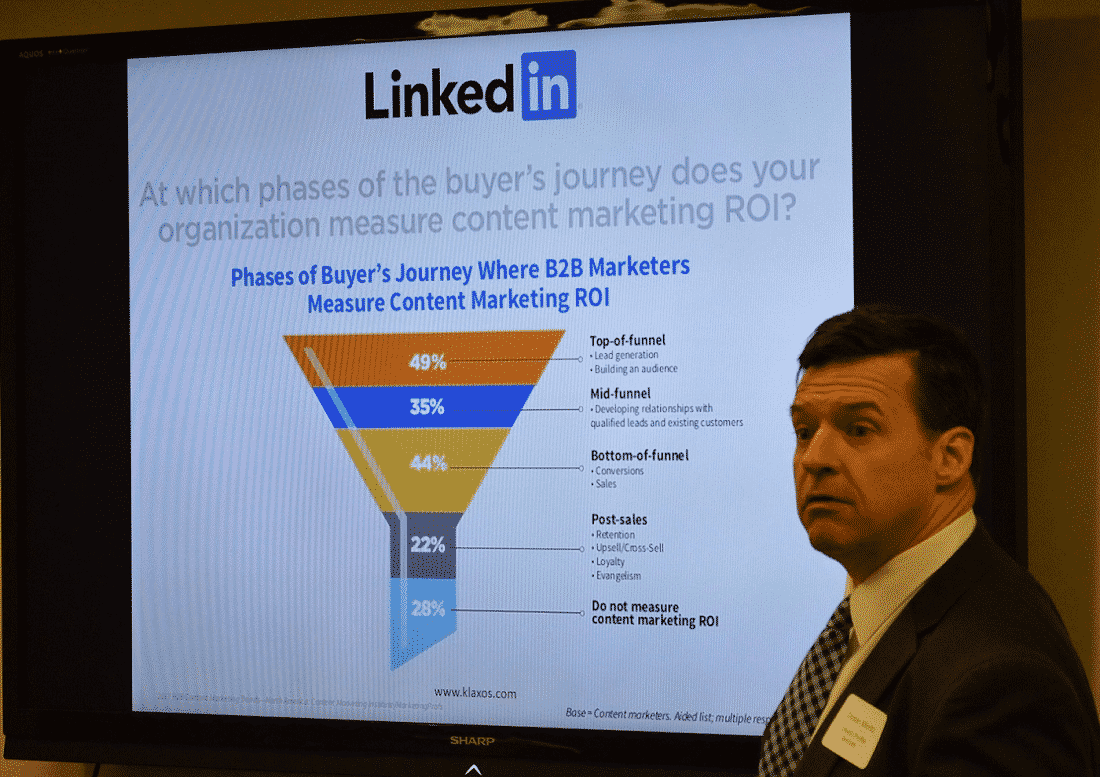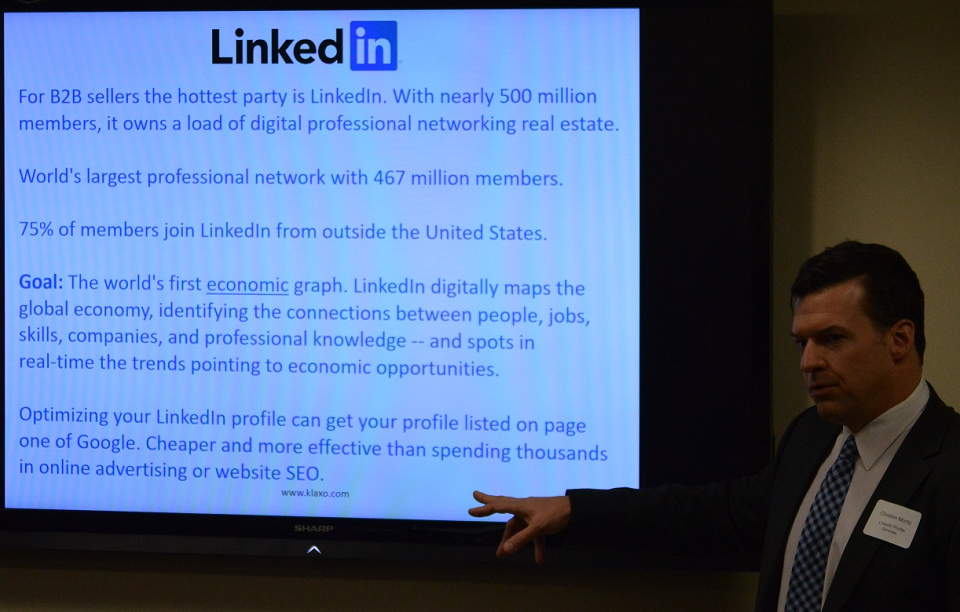Recently I presented to the Washington Network Group (WNG) on the hottest topic in business-to-business (B2B) sales – Social Selling. In this keynote session, I detailed how to close more warm leads through better utilization of LinkedIn and in the process becoming a thought leader in your industry.
What is Social Selling?
- Leveraging your professional brand to fill your pipeline with the right people, insights and relationships.
- Using social media to interact directly with prospects. Salespeople provide value by answering prospect questions and offering thoughtful content until the prospect is ready to buy.
- Inform, challenge and inspire prospects rather than interrupting their busy lives with cold calls and hard sells.
- Social Selling is used primarily for B2B sales or highly considered B2C purchases (e.g., financial advisory services, automotive, real estate).

Christian Moritz presentation at the Washington Network Group (WNG)
Difference between Social Selling and Content Marketing?
Social selling lives in the middle area between marketing fueled unqualified leads and the deep funnel stage of a final meeting with buyers. Content marketing has the limited objective of sales lead origination, Social Selling guides that lead into ongoing, deeper, direct interaction with the soon to be the purchaser. Using a sandwich as a metaphor, content marketing could be considered the bread (lead generation and customer engagement) while social is the meat.
Why It Is Important
These days, almost 60% of the buying process is complete before the buyer reaches out to a salesperson. Social sellers succeed by continually using digital tools to engage with potential customers after the prospecting phase of the funnel. According to the Edelman Trust Barometer, 84 % of decision-makers begin the buying process through a referral, and where they obtain the referral is through offline and online social networks: “social selling.”
Top-tier social sellers become the life of the online party by creating a flourishing professional online presence filled with expertise, trust, and engagement. Today’s technology has no qualms about replacing personal phone calls and emails with status updates, likes, images and video stories.
These days, it’s how you scale implementation of ice-breakers, education and prospect self-evangelism. It all takes place online. The tactics are the same, but the location has changed and you need to get on board. When was the last time an email blast campaign compelled you to “learn more”? How did you respond when you received your last cold phone call? Do you even check your voice mail anymore?
How to Execute Social Selling

Christian Moritz presentation at the Washington Network Group (WNG)
1. Develop Your Online Presence
Keyword optimize your LinkedIn personal profile and company page.
Obtain a professional photo.
Train sales, marketing and other external facing executives.
Join relevant groups.
2. Do Your Research
Search LinkedIn, Twitter, Blogs, etc. to learn more about your target organizations and decision makers.
Most buyers begin their product or service research with a Google search. Wikipedia & LinkedIn are often on page one.
3. Develop Your Network
Develop authentic, valuable connections that avoid cold calls.
Develop rapport and give advice before asking for something.
91% of customers will give referrals, only 11% of salespeople ask
4. Build Trust
You can develop trust through social media alone.
Thought leadership developed via sharing valuable information.
Ask a prospect for their opinion on a new product or industry trending topic. It doesn’t hurt to complement their skills, work anniversary or other simple milestone.
Social Selling Checklist
- Optimize your LinkedIn professional profile
- Optimize your LinkedIn Company Page
- Train sales and external facing executives
- Create digital introductions
- Network building with thought leaders & decision makers in your industry
- Share relevant, approved content from your organization or independent media
- Article publishing and sharing
- Lead generation
- Funnel management
- Close the sale

